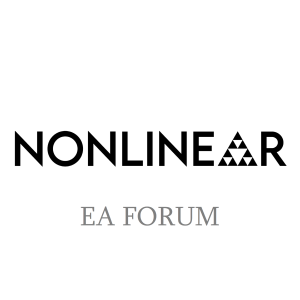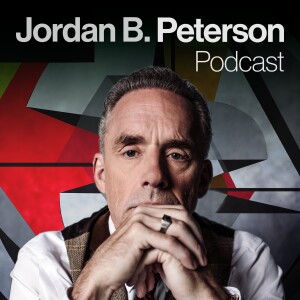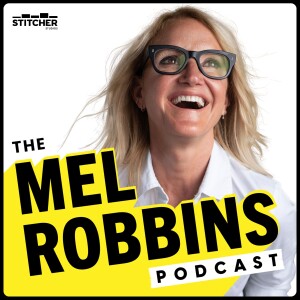
The Nonlinear Library: EA Forum
Education
Welcome to The Nonlinear Library, where we use Text-to-Speech software to convert the best writing from the Rationalist and EA communities into audio. This is: Pre-slaughter mortality of farmed shrimp, published by Hannah McKay on March 12, 2024 on The Effective Altruism Forum.Citation: McKay, H. and McAuliffe, W. (2024). Pre-slaughter mortality of farmed shrimp. Rethink Priorities.https://doi.org/10.17605/OSF.IO/W7MUZThe report is also available as apdf here.Executive summaryMortality rates are high in shrimp aquaculture, implying welfare threats are common.It is typical for ~50% of shrimp to die before reaching slaughter age.This equates to around 1.2 billion premature deaths a day on average.Mortality varies among species; prioritizing interventions should take this into account.Because of high pre-slaughter mortality (~81%), Macrobrachium shrimp represent a larger share of farmed shrimp than slaughtered shrimp.Most individual deaths are P. vannamei, despite having the lowest mortality rate.More larvae die than any other life stage, but this does not necessarily mean efforts should focus on them.Uncertainty remains about whether larval shrimp are sentient - they are planktonic, so do not make autonomous decisions.Minimizing larval deaths could cause compensatory deaths in later life stages (e.g., ensuring weaker larvae survive, who then die from later harsh conditions).Interventions should likely concentrate on the ongrowing stage (postlarval and juvenile-subadult shrimp), where there are still tens of billions of deaths.There are several causes of mortality and differences between farm types.Most causes are likely a combination of intrinsic shrimp traits (e.g., young shrimp are sensitive to environmental fluctuations), farming practices, and diseases.Disease is a main cause throughout life, but it is often a downstream effect of issues that farmers have some control over (e.g., poor water quality).Variation among reported figures, especially that more intensive farms have fewer deaths, suggests many factors are at play and that some are controllable.The effects of reducing early mortality on industry trajectory are uncertain.The number of shrimp born may decrease if farmers must produce fixed output. But shrimp would live longer, increasing the chances for negative experiences.However, consumer demand has historically outstripped supply, so the industry may grow if it had better control of conditions causing mortality.If reduced deaths come from intensification of practices, more shrimp may be reared in conditions that can harm welfare (e.g., high stocking densities).Pre-slaughter mortality cannot depict total welfare because it misses nonfatal effects.Mortality is only a lower-bound proxy of how many shrimp suffer negative welfare.Premature mortality is more appropriate as one indicator among many that a welfare reform was successful, rather than an end in itself.Pre-slaughter mortality data is limited and non-uniform.Reports should clarify whether mass die-off events were excluded from mortality estimates and if rates are based on intuition from experience or empirical studies.Box 1: Shrimp aquaculture terminologyThe terms 'shrimp' and 'prawn' are often used interchangeably. The two terms do not reliably track any phylogenetic differences between species. Here, we use only the term "shrimp", covering both shrimp and prawns. Note that members of the family Artemiidae are commonly referred to as "brine shrimp" but are not decapods and so are beyond the present scope.We opt for the use of Penaues vannamei over Litopenaeus vannamei (to which this species is often referred), due to recognition of the former but not the latter nomenclature by ITIS, WorMS, and the Food and Agriculture Organization of the United Nations (FAO) ASFIS List of Species for Fishery Statistics Purposes.The shrimp farming industry uses many terms usually associated with agriculture - for example, 'crops' for a group o...
More Episodes
EA - The Intergovernmental Panel On Global Catastrophic Risks (IPGCR) by DannyBressler
 2024-02-07
2024-02-07
EA - Diet that is vegan, frugal, time-efficient, ~evidence-based and ascetic: An example of a non-Huel EA diet? by Ulrik Horn
 2024-02-06
2024-02-06
EA - Introducing the Animal Advocacy Forum - a space for those involved or interested in Animal Welfare & related topics by David van Beveren
 2024-02-06
2024-02-06
EA - A review of how nucleic acid (or DNA) synthesis is currently regulated across the world, and some ideas about reform (summary of and link to Law dissertation) by Isaac Heron
 2024-02-06
2024-02-06
EA - Three tricky biases: human bias, existence bias, and happy bias by Steven Rouk
 2024-02-05
2024-02-05
EA - AI safety needs to scale, and here's how you can do it by Esben Kran
 2024-02-04
2024-02-04
EA - A simple and generic framework for impact estimation and attribution by Christoph Hartmann
 2024-02-04
2024-02-04
EA - Types of subjective welfare by MichaelStJules
 2024-02-02
2024-02-02
EA - Managing risks while trying to do good by Wei Dai
 2024-02-01
2024-02-01
EA - Increasingly vague interpersonal welfare comparisons by MichaelStJules
 2024-02-01
2024-02-01
EA - Fish Welfare Initiative's 2023 in Review by haven
 2024-02-01
2024-02-01
EA - Announcing Niel Bowerman as the next CEO of 80,000 Hours by 80000 Hours
 2024-01-31
2024-01-31
EA - My model of how different AI risks fit together by Stephen Clare
 2024-01-31
2024-01-31
EA - Who wants to be hired? (Feb-May 2024) by tobytrem
 2024-01-31
2024-01-31
EA - Brian Tomasik on charity by Vasco Grilo
 2024-01-31
2024-01-31
EA - Project for Awesome 2024: Make a short video for an EA charity! by EA ProjectForAwesome
 2024-01-31
2024-01-31
EA - Things newer (university) group organisers should know about by Sam Robinson
 2024-01-31
2024-01-31
EA - Lower-suffering egg brands available in the SF Bay Area by mayleaf
 2024-01-31
2024-01-31
EA - Deciding What Project/Org to Start: A Guide to Prioritization Research by Alexandra Bos
 2024-01-31
2024-01-31
EA - EV investigation into Owen and Community Health by EV US Board
 2024-01-29
2024-01-29
Create your
podcast in
minutes
- Full-featured podcast site
- Unlimited storage and bandwidth
- Comprehensive podcast stats
- Distribute to Apple Podcasts, Spotify, and more
- Make money with your podcast
It is Free
You may also like

Mayo Clinic Talks


The Saad Truth with Dr. Saad


Positive Thinking Mind


The Jordan B. Peterson Podcast


The Mel Robbins Podcast


- Privacy Policy
- Cookie Policy
- Terms of Use
- Consent Preferences
- Copyright © 2015-2024 Podbean.com


 iOS
iOS Android
Android